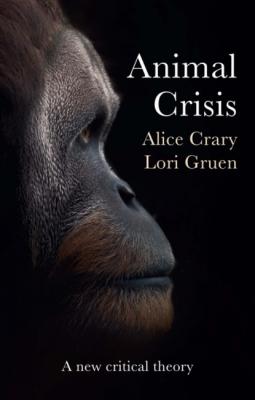ТОП просматриваемых книг сайта:
Animal Crisis. Alice Crary
Читать онлайн.Название Animal Crisis
Год выпуска 0
isbn 9781509549696
Автор произведения Alice Crary
Жанр Философия
Издательство John Wiley & Sons Limited
The reach of human activity into animal lives and environments is so extensive that it would be difficult to find any unaffected individual animal or animal population. The horrors that human beings visit on animals – incidentally as well as deliberately – are so great and of such massive proportions that, once we begin to bring them into view, we can easily feel disoriented and unable even to properly grasp them. If humans killed each other at the same rate we kill animals, the Humane League has calculated, we’d be extinct in 17 days (@HumaneLeague, July 15, 2018).
These horrors demand an urgent response. Notable political and intellectual pro-animal movements are responding. Their ongoing political interventions are multifarious, including – to give a sense of the range – rescuing animals and human beings from adverse weather events; attempting to slow the devastation of forests and oceans, for instance, by means of Indigenous land defenses and youth climate strikes; agitating for systematic political changes that would shift how humans interact with animals and the environment; helping farmers to transition to plant-based food production; bringing plant-based foods to communities without access to them; and exposing the cruel and callous treatment of animals in concentrated animal feeding operations (CAFOs) and industrial slaughterhouses.
Alongside these and other political interventions are a range of pro-animal intellectual initiatives aimed at establishing the value of animal lives in ways that would account for the felt need for urgent political responses. These intellectual projects are increasingly recognized within the academy. One sign of this is the emerging acceptance of animal ethics within the discipline of philosophy; only 20 years ago it was still a fringe subject represented at best sporadically in Western universities. In addition to becoming a recognized area of study in philosophy departments, animal ethics is taught in other departments in the humanities and the social sciences, in law schools, and in increasingly common animal studies courses and programs. The upsurge of interest in animal ethics as a field is undeniably driven in large part by the recognition that human–animal relations have reached a desperate point. At the same time, embedding the field in the institutional structures of universities risks detaching it from the kind of responsiveness to worldly events that is its original raison d’être. To counteract the scholarly tendency to disconnect from practical matters, here we interrogate received frameworks for doing animal ethics to determine whether their grounding assumptions are genuinely suited for exposing actual harms to animals and the anthropocentric institutions and systems that authorize such harm.
Конец ознакомительного фрагмента.
Текст предоставлен ООО «ЛитРес».
Прочитайте эту книгу целиком, купив полную легальную версию на ЛитРес.
Безопасно оплатить книгу можно банковской картой Visa, MasterCard, Maestro, со счета мобильного телефона, с платежного терминала, в салоне МТС или Связной, через PayPal, WebMoney, Яндекс.Деньги, QIWI Кошелек, бонусными картами или другим удобным Вам способом.

